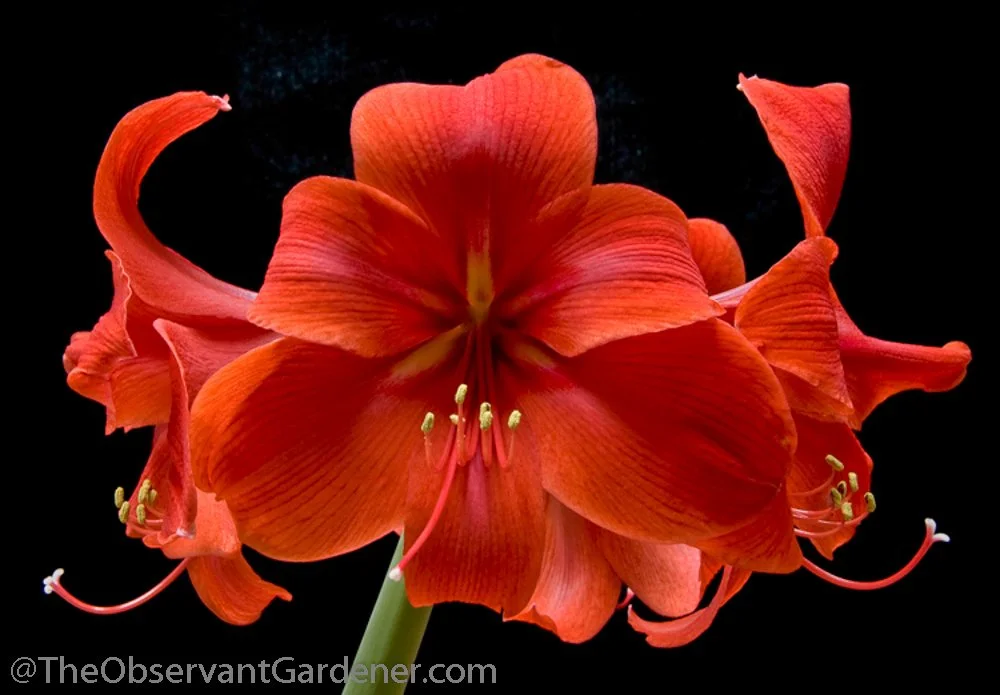There are many choices for growing flowers in the winter, such as crocus, hyacinth, paperwhite narcissus, and tulips. These bulbs, which are widely available at garden centers and through catalogs, are easy to grow. Among these many choices, my preference is the amaryllis. It is a reliable plant to grow indoors, with large and attractive blooms. Winter is the very time when we need their colorful flowers and green foliage in our lives. I have tried many different types of amaryllis bulbs over the years, all with pleasing results.
Plant Amaryllis Bulbs In October for December Blooms
You begin by planting the amaryllis bulb in a pot, or buying one that is already potted. Next, place the potted bulb in a sunny location and water occasionally. Once planted, the bulb starts a growing process that can last up to ten weeks before it produces a bloom. So, if you want colorful flowers for December, be sure to plant the bulb in October.
At first, the amaryllis bulb will not appear responsive. After a few weeks, however, small green shoots will emerge. Then the growth becomes rapid. Shoots become taller every day. In a few weeks, a single large bud will appear and then another. Soon there will be a cluster of several blooms. I always get excited at this stage, anticipating how many blossoms the plant will produce. Some amaryllis bulbs even grow two stalks, each with multiple large blooms. In planning my winter amaryllis "garden," I stagger potting the bulbs so that when one is finished blooming, another is ready to produce.
The amaryllis is native to regions in Africa, the Caribbean, and South America. The name amaryllis originates from the Greek word amrysso, meaning "to sparkle." The magnificent blooms certainly do sparkle with their vibrant colors and perfect symmetry!
The Amaryllis Can Rebloom
The amaryllis is a perennial, so it will rebloom if you follow a few simple steps. Once the blooms fade, cut them off and continue to water and fertilize the plant. The long leaves will continue to grow and send nourishment back to the bulb. In the spring, plant the bulb outside in full sun and well-drained soil. In the fall, move the bulb indoors to a cool, dark place so it can become dormant for approximately eight weeks. Now you are ready to place the bulb in a sunny location indoors where it can start the growing process again.
Last spring I planted several amaryllis bulbs outside. Some bloomed again in their new setting during the summer. Since the winter is fairly mild and short here in Western North Carolina, I plan to keep these bulbs outside this winter to see how they do. If our winter is mild this year, they might survive with a layer of mulch to protect them.
I have had impressive results with theses types of amaryllis: Monaco, Candy Floss, Marilyn, Apple Blossom, Picotee, and Red Lion. Long after my outdoor plants have died for the season, I always look forward to colorful amaryllis blooms. The sight of these large flowers on a cold, dreary day is uplifting throughout the winter months.
This article appears in The Laurel of Asheville. Follow @TheObservantGardener on Instagram to see new garden photos daily!







